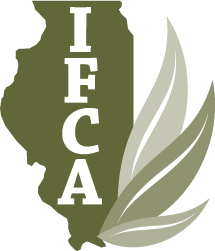Considerations for Dicamba Application Restrictions
On March 1, 2019 the Illinois Department of Agriculture (IDOA) announced it will require Special Local Needs labels (referred to as 24(c) labels) during the 2019 growing season for the four commercial dicamba-containing products labeled for use in dicamba-resistant soybean varieties. The Special Local Needs labels include five elements, one of which is a June 30 application deadline. IDOA recognizes the importance of this technology to Illinois soybean growers and is taking this proactive step to reduce the instances of damage to dicot plant species (including sensitive soybean, many specialty crops and native plants such as trees) in order to preserve the technology for future seasons.
In Illinois, there actually are four application timing restrictions for these dicamba-containing products:
•R1 soybean growth stage (from original registration in Fall 2016)
•45 days after soybean planting (from renewed labels in October 2018)
•V4 soybean growth stage for those using Tavium, a recently labeled dicamba premix
•June 30, 2019 mandated by the Illinois 24(c) label
Planting delays have some worried whether a dicamba application can be made before soybean or the calendar reaches one of these application restrictions. What are some steps that still can be taken to increase the likelihood of successful weed control in dicamba-resistant soybean fields?
In fields where broadleaf weeds can be controlled by foliar-applied herbicides other than dicamba, the dicamba application restrictions will have minimal impact. Similarly, those who have selected a dicamba-resistant variety more for yield potential than as a weed control necessity have alternative postemergence herbicide options. Soybean growers might also consider checking with your soybean seed dealer about availability of alternative trait platforms in case planting delays force a change from corn to soybean. Perhaps a similar suggestion can be made for those intending to plant soybean following wheat harvest.
Click Here to read more.
